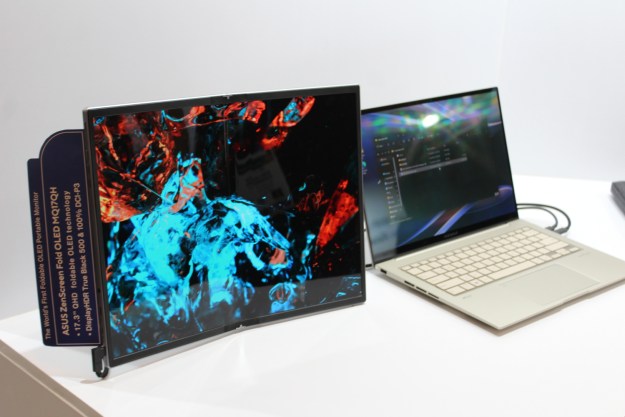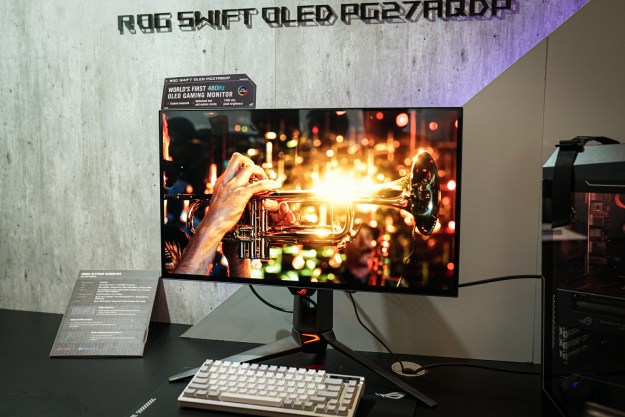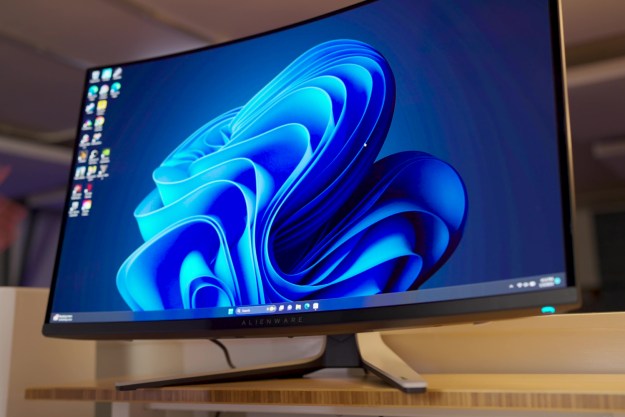
- Fantastic HDR gaming
- Incredible out-of-box color accuracy
- Excellent console monitor
- High resolution, fast refresh rate
- Three-year warranty is great
- Fairly affordable
- Thick, plastic back
- No speakers
Alienware earned itself quite a reputation a couple of years ago with its 34 QD-OLED.
But it had a strong hook on its side as the first really good OLED gaming monitor out there. That’s not true anymore, so the question is does the new Alienware monitor, the 32-inch
And the answer is yes, for now. Absolutely.
Video review
Alienware 32 QD-OLED specs
| Alienware 32 QD-OLED (AW3225QF) | |
| Screen size | 32 inches |
| Panel type | QD-OLED |
| Resolution | 3820 x 2160 |
| Peak brightness | 1,000 nits (HDR), 250 nits (SDR) |
| HDR | DisplayHDR True Black 400 Dolby Vision |
| Aspect ratio | 16:9 |
| Contrast ratio | 1,000,000:1 |
| Response time | 0.03ms (GtG) |
| Refresh rate | 240Hz with Adaptive Sync, G-Sync compatible |
| Curve | 1700R |
| Speakers | N/A |
| Inputs | 1x DisplayPort 1.4 (4K at 240Hz), 2x HDMI 2.1 (eARC to support Dolby Atmos) |
| Ports | 3x USB-A 3.2 Gen 1, 1x USB-C 3.2 Gen 1 |
| List price | $1,200 |
Design
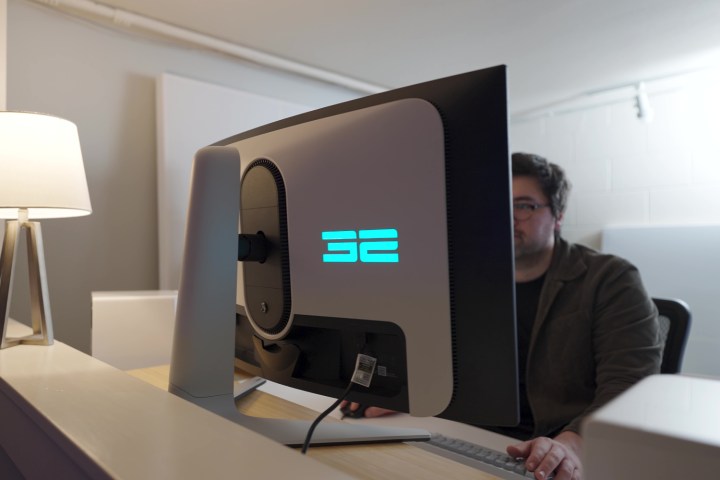
The Alienware 32 QD-OLED is the first of its kind. There have been a few other
Now,
The curve isn’t a distraction at all.
But there’s room to grow here, and it’ll ensure that your system isn’t bottlenecked by the refresh rate in multiple rounds of GPU upgrades down the line. If your concern with the previous Alienware 34 was that it “only” had a refresh rate of 175Hz, then you should like this change. That faster refresh rate comes in handy for more competitive games when you might want to jump down to a lower resolution.
Of course, if you want to take that a step further, Alienware also now has a 27-inch QD-OLED model with a 360Hz refresh rate.
The Alienware 32 QD-OLED is not an ultrawide like the Alienware 34, and instead sticks with a conventional 16:9 aspect ratio. It does, however, come with a 1700R curve. For me, the curve was subtle enough to not feel awkward in this aspect ratio. This isn’t one of those 32-inch 1000R
It’s worth noting, though, that both other
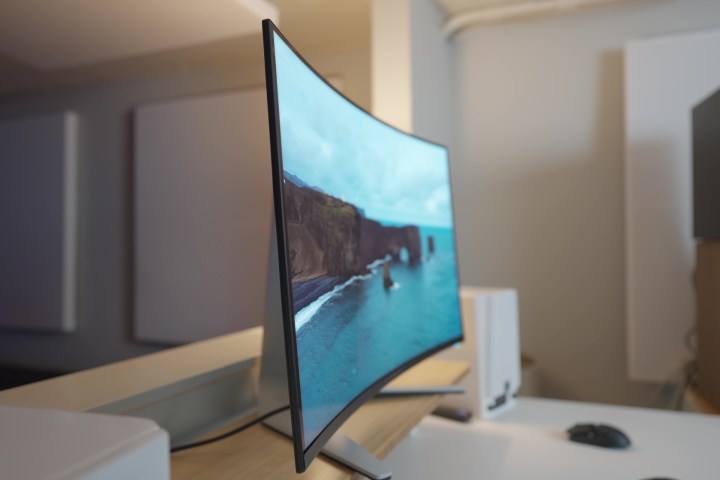
Aside from the panel itself, everything else about the 32-inch model resembles the 34-inch one. So, the design and setup is all basically identical, including the base, the stand, and the lighting on the back.
It sports the familiar two-tone black-and-white exterior that Alienware has become known for. I do wish it was offered in all-black as well, but for now, that’s exclusive to the 27-inch model. The back chassis is still made out of plastic, which admittedly doesn’t feel great when you reach up to adjust the screen.
Speaking of adjustment, you do have over 4 inches of height adjustment and 40 degrees of tilt, which matches what you could do with the Alienware 34. You can’t go vertical, but there’s enough adjustment to find a comfortable position.
The Alienware 32 is missing a set of built-in speakers.
The Alienware 32 is also considerably thicker than some comparable
The other thing missing from the Alienware 32 is a set of built-in speakers. In the past, gaming
Ports and controls
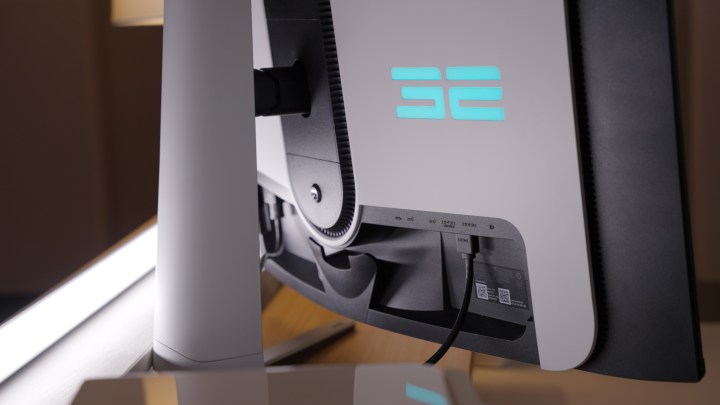
You can access the on-screen display (OSD) on the Alienware 32 via the joystick that’s dead center under the screen. It’s easy to navigate through the menu and quickly get to things like Brightness, Contrast, or Inputs.
You’ll find other important settings here like the Smart
Speaking of console support, the Alienware 32 QD-OLED does more on that front than almost any gaming monitor I can think of. First of all, it has the previously mentioned Console mode, which automates
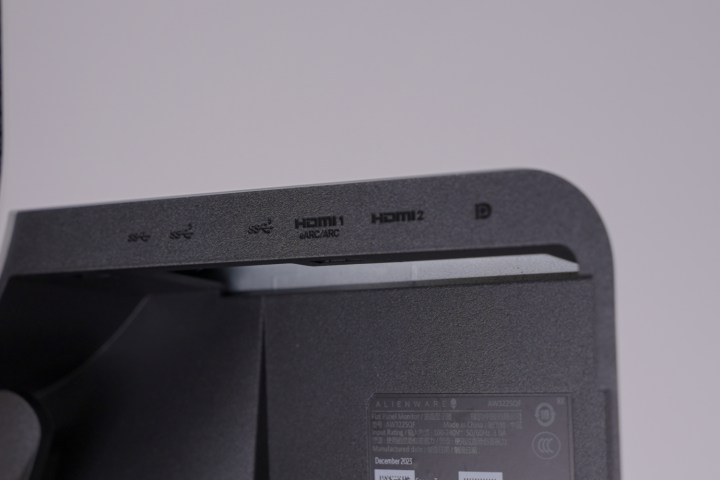
The final pieces of the puzzle are the two
In addition to the two
The ports are all downward-firing on the back, hidden behind a removable cover. The cable management is good too, as cables can be run out the back and through the stand.
Image quality
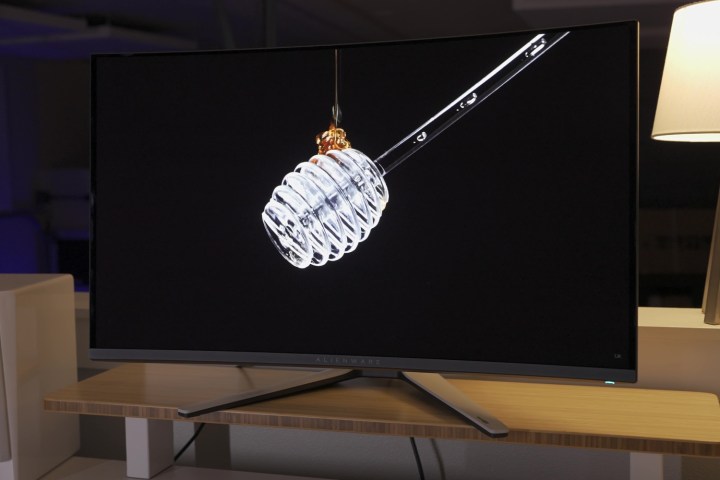
The QD-OLED here is the star of the show, of course. But this isn’t 2022 – there are plenty of great OLED
If there’s one thing the Alienware 34 struggled with, it was color accuracy. It’s not that it was bad, but it was sort of middle of the road for a high-end display, rather than exceptional in the way that monitor was in pretty much every other aspect.
It’s the most color accurate monitor out of the box we’ve ever tested.
This new crop of QD-OLED
The good aspects are all the same. It’s still OLED, you still get the perfect black levels, you still get the same brightness. I measured 1,033 nits for a 1% window or 830 nits for a 4% window — and that’s important because color accuracy does still drop significantly at those higher brightness levels. But the combination of those black levels and the 1000-nit peak brightness makes for some really gorgeous

It still isn’t super bright in SDR, though. It still only gets 260 nits of brightness with
In an office setting with some bright overhead lights on, I found myself often keeping
Really, the only thing the Alienware 32 is lacking, especially as a
Gaming experience

When it comes to gaming, it’s an unparalleled experience. The combination of the excellent
It’s hard not to get sucked into whatever game you’re playing on a display like this. I should note that although the Alienware 32 doesn’t technically have certification for FreeSync Premium Pro or G-Sync Ultimate, it does have variable refresh rate, which is really all that matters when it comes to avoiding screen tearing.
The fact that playing on a console is as easy as on a PC is a huge benefit too. This is a monitor that was clearly crafted to be a console-friendly display. In addition to the aforementioned ports and
I know this doesn’t apply to everyone by any means, but if you do happen to be a hybrid gamer, and you love the idea of using both a console and a PC interchangeably with a monitor, I can’t think of a better solution. This really is as good as it gets.
It’s another winner
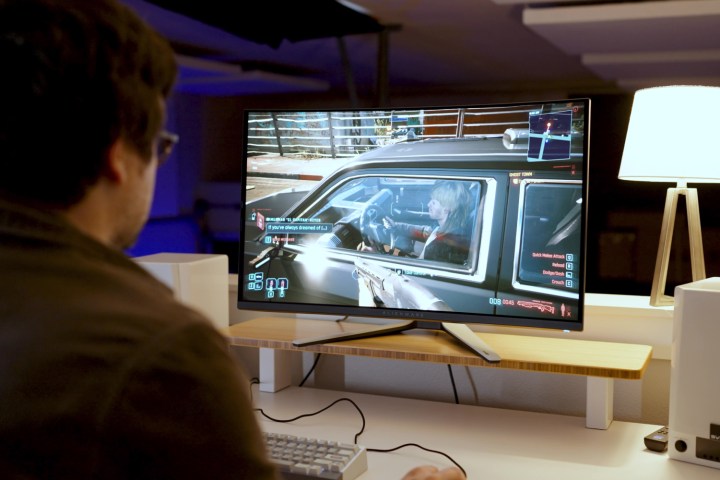
Alienware now has three QD-OLED options, and they’re all great. The Alienware 32 is the most expensive of the three, coming in at $1,200, and it’s also the most high-end since it’s
The Alienware 34 QD-OLED will always have its place, especially because it’s now cheaper. And besides, people love ultrawide
Alienware won’t be the only company with these second-gen QD-OLED
The other thing that sets these Alienware
Editors' Recommendations
- The 10 best monitors for 2024: tested and reviewed
- Best Alienware deals: Gaming PCs, laptops, and monitors
- Best OLED monitor deals: Get an OLED screen from just $450
- MSI is getting slammed on Reddit for a controversial monitor decision
- MSI and Asus just flipped the script for their OLED gaming monitors



